Shrubby germander (
Teucrium fruticans) is a drought-tolerant beauty that basks in full sun, while its foliage and flowers provide a visually cooling backdrop. This Mediterranean native, also called shrubby germander, thrives in drought-tolerant gardens and provides welcome color contrast in gardens filled with bright green plants. It’s a member of the mint family and produces blue flowers among aromatic foliage in spring through fall.
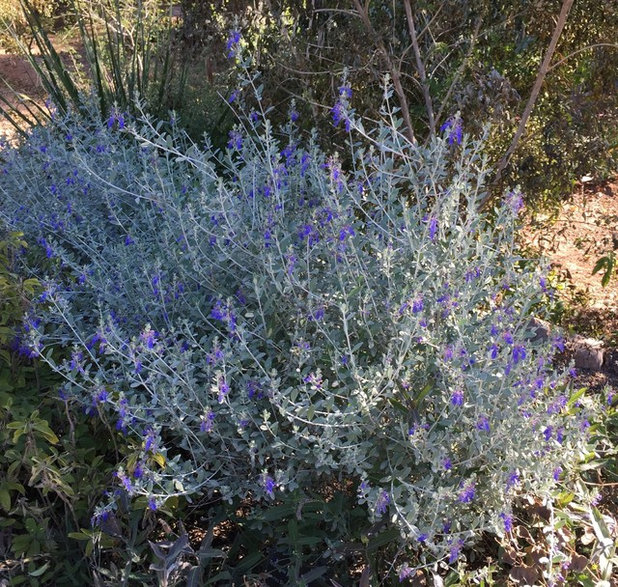
Noelle Johnson Landscape Consulting
Botanical name: Teucrium fruticansCommon names: Shrubby germander, bush germander, tree germander
Origin: Native to the sunny, dry regions of Southern Europe bordering the Mediterranean Sea
Where it will grow: Hardy to 10 degrees Fahrenheit, or minus 12 degrees Celsius (USDA Zone 8; find your zone)
Water requirement: Drought-tolerant once established but does best when watered every 14 days in spring through fall and every three to four weeks in winter; in low-desert gardens, water every seven to 10 days in summer
Light requirement: Full and reflected sun, although can tolerate filtered sun in desert gardens
Mature size: 5 to 6 feet tall and wide; the variety ‘Azureum’ grows to 3 feet tall and wide
Benefits and tolerances: Drought-tolerant; attracts bees; deer-resistant
Seasonal interest: Flowers in spring, summer and fall
When to plant: Spring or fall
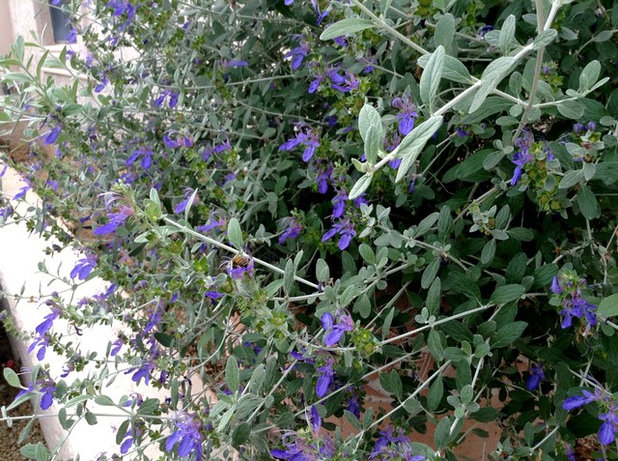
Noelle Johnson Landscape Consulting
Distinguishing traits. Shrubby germander’s silvery foliage initially takes center stage in the landscape. The tops of the leaves are silvery-gray, while the undersides are a lighter silvery-white. Violet-blue flowers, appearing in spring through fall, seem to glow in the landscape, providing a cooler color palette in the drought-tolerant landscape.
Shrubby germander is evergreen and takes well to shearing, making it one of the few flowering shrubs suitable for formal gardens. However, it can also be allowed to grow in its natural shape.
How to Prune Your Flowering Shrubs for the Best Blooms
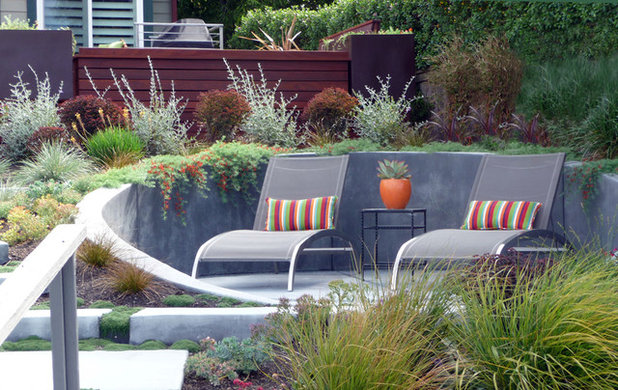
Dig Your Garden Landscape Design
How to use it. Make the most of this Mediterranean native’s silvery foliage by pairing it with plants that have dark foliage and similar growing needs, such as Baja fairy duster (
Calliandra californica), bougainvillea (
Bougainvillea spp.) or Valentine bush (
Eremophila maculata ‘Valentine’).
Create color and texture contrast by planting pink muhly grass (
Muhlenbergia capillaris)
behind it. The burgundy plumes and green foliage will contrast beautifully with shrubby germander’s silvery-gray foliage.
Shown: ‘Hallmark’ bulbine (
Bulbine frutescens ‘Hallmark’), parrot’s beak (
Lotus berthelotti), ‘Blackbird’ spurge (
Euphorbia ‘Blackbird’) and ‘Azureum’ shrubby germander (
T. fruticans ‘Azureum’)
See more of this drought-tolerant waterfront garden in California
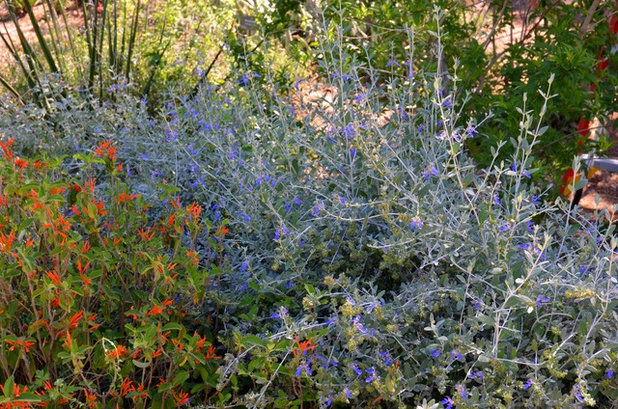
Noelle Johnson Landscape Consulting
Grow a living border with the more compact variety ‘Azureum’, which is roughly half the size of the true species; you can create a 2- to 3-foot-tall hedge that can be sheared to the desired size. ‘Azureum’ won the Royal Horticultural Society’s annual Award of Garden Merit in 1993.
Short on garden space? Shrubby germander also makes a great container plant.
Shown: ‘Azureum’ shrubby germander growing alongside Mexican honeysuckle
(
Justicia spicigera)
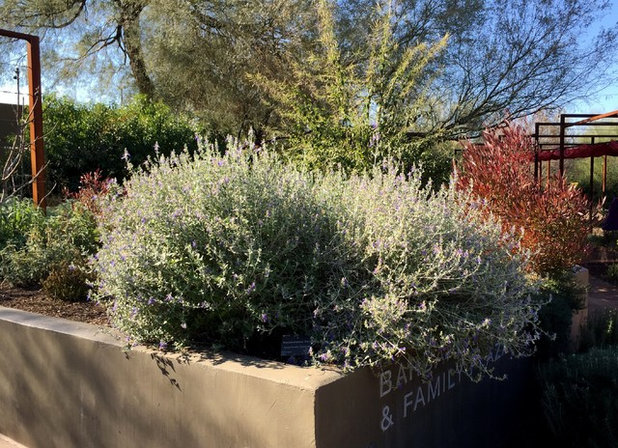
Noelle Johnson Landscape Consulting
Planting notes. Plant shrubby germander in full sun. It is not fussy and can handle most soils as long as they are well-drained.





